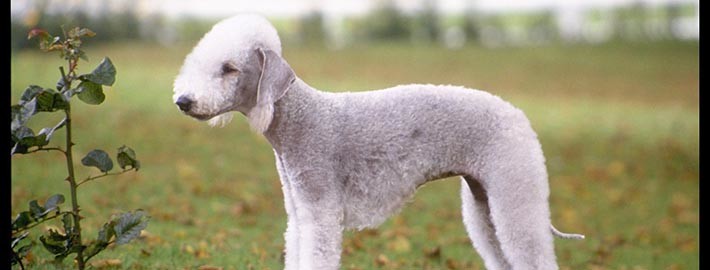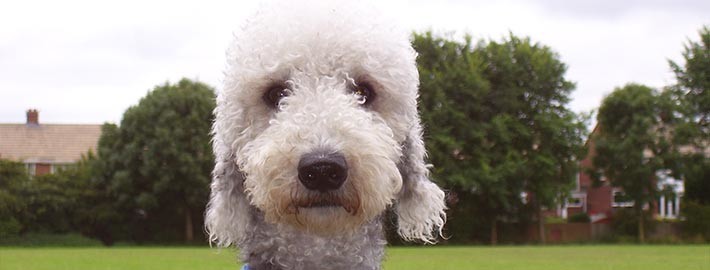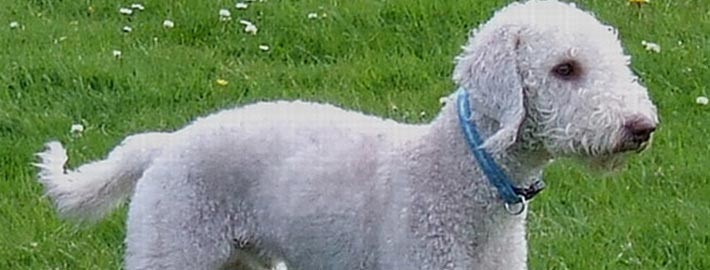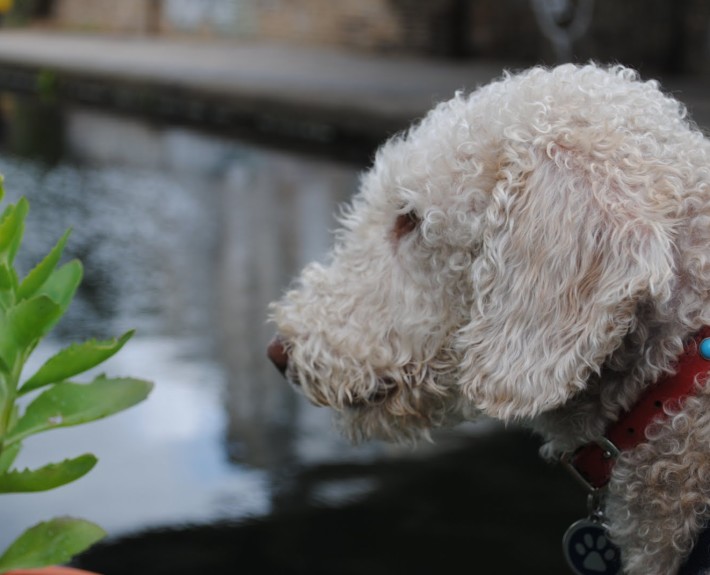What makes the Bedlington Terrier Unique?
With all the makings of a wonderful family pet, the fluffy Bedlington Terrier is both at home in the city or in the countryside. These energetic and fun loving dogs may resemble sheep, but they truly have the hearts of lions.
Breed Groups
Page Contents
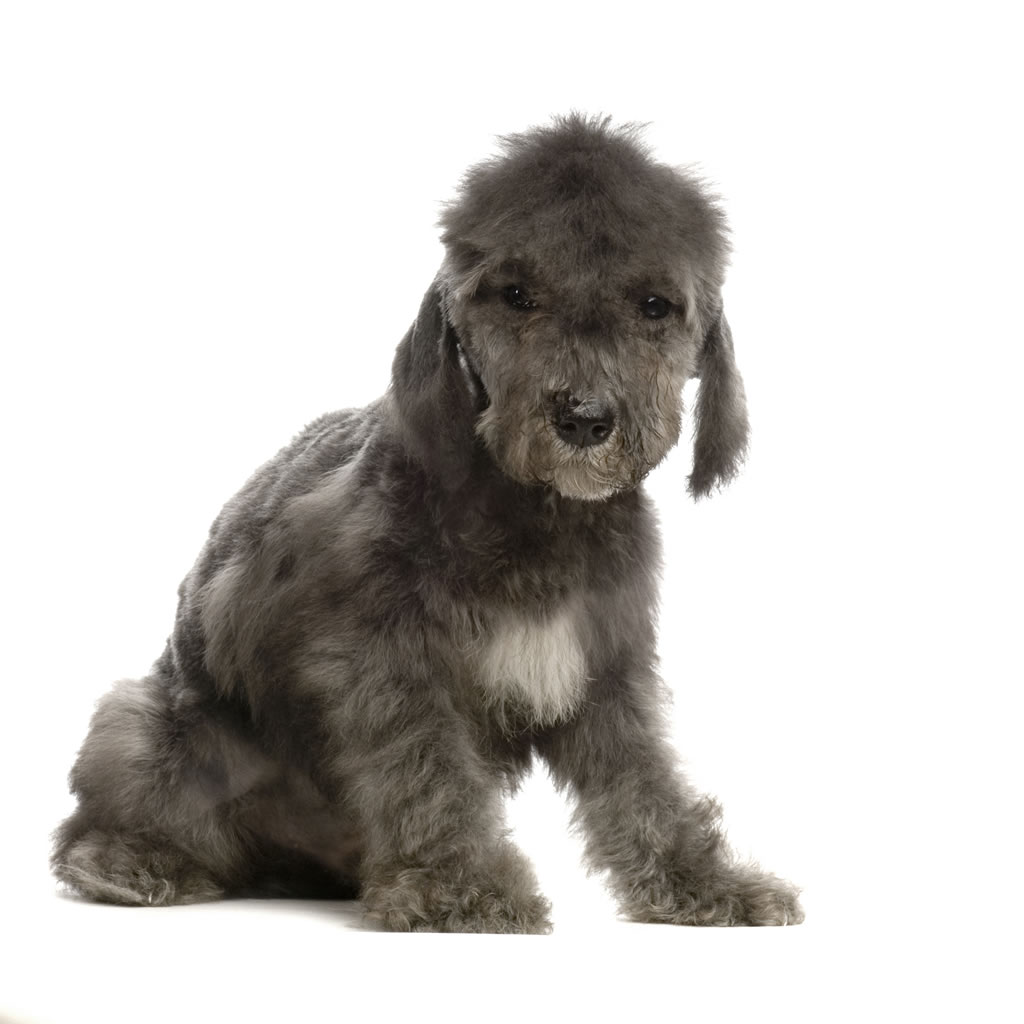
SnapShot
| Size: | Males – 38 to 42 cm (15 to 17 inches) Females – 41 to 44 cm (16 to 18 inches) |
| Weight: | Males – 7.7 to 10.5 kg (17 to 23.1 pounds) Females – 7.7 to 10.5 kg (17 to 23.1 pounds) |
| Origin: | England |
| Life Span: | 12 – 14 Years |
| Colour: | Blue & Tan, Liver & Tan, Sandy, Blue, Sandy & Tan, Liver |
| Litter Size: | 3 to 6 puppies |
Is the Bedlington Terrier Right For You?
Bedlington Terriers are unrivaled in their ability to chase and fight difficult quarry. Their unique shape enables them to turn or pivot quickly when chasing quarry at high speed, as well as get into the tight underground dens of their prey. Despite their energetic disposition, Bedlington Terriers are fairly well suited towards life indoors. These loyal dogs make good family companions due their playful and affectionate natures. Children are their favorite playmates, but the breed is even friendly towards strangers.
Bedlingtons also like to bark and dig, which may prove to be a problem for some owners. Without enough mental and physical exercise, the dogs may also have a tendency to be high-strung and prone to unwanted behaviors.
In 5 Words
- Spirited
- Good-Tempered
- Intelligent
- Affectionate
- Curious
Characteristics
Learn About the Bedlington Terrier
Description
General Description
Bedlington Terriers are unrivaled in their ability to chase and fight difficult quarry. Their unique shape enables them to turn or pivot quickly when chasing quarry at high speed, as well as get into the tight underground dens of their prey. The Bedlington Terrier has distinctive silhouette that resembles a sighthound more than it does a typical terrier. This allows the dogs to move quickly with a light and springy gait.
Bedlington Terriers have small, almond-shaped eyes and low-set, triangular ears with round tips. These dogs also have wedge-shaped heads and strong muzzles. Their teeth should meet in a level or scissors bite. Bedlington Terriers additionally have a deep chest and an arched back. The back legs on this breed are somewhat longer than their front legs. Their tapered tails are low-set and their dewclaws are typically removed.
Size
All Bedlington Terriers average between 17 and 23 pounds (7.7 and 10.4 kilograms) in weight. Males generally measure from 16 to 17.5 inches (41 to 44 centimeters) in height, but ideally should be around 16.5 inches (42 centimeters) tall. Females of this breed often range between 15 and 16.5 inches (38 and 42 centimeters) in height, but 15.5 (39 centimeters) is the preferred stature.
Coat
These dogs have coats that are a mixture of hard and soft hair standing off the skin, which provides them with good protection and an outstanding appearance. The Bedlington Terrier is a breed that is often described as having the appearance of a lamb and the heart of the lion, partly due to the way their coats are commonly clipped. These dogs come in blue, liver and sandy coloration, all three of which can come with or without tan points. The breed possesses a greying gene, which causes the dogs to change color as they age. Dogs that start off with black or dark brown colorations may have them turn silvery or mauve as time progresses. Their topknot and legs, however, may remain lighter in hue.
Short History of the Bedlington Terrier
The famed progenitor of Bedlington was a dog named Old Flint. This dog was born in 1782 and was owned by Squire Trevelyan. Originally, the breed was known as the Rothbury or Robbery Terrier. This name derived from a famous female dog brought from Staffordshire by a company of nail makers who settled in Rothbury. The terriers of this strain were accustomed to rodent hunting underground, and worked with packs of foxhounds kept there at the time.
It is also suggested that the Bedlington may have made its way to Ireland and played a part in the early development of the Kerry Blue Terrier. By 1877, the first Bedlington Terrier club was officially formed but the breed had to wait until 1948 to achieved the recognition of the United Kennel Club (UKC). The same year, Ch. Femurs’ Cable Car, won the best-in-show award at the Westminster Kennel Club Dog Show and he was featured on the cover of Sports Illustrated in the February 8, 1960 edition.
Temperament
Despite their energetic disposition, Bedlington Terriers are fairly well suited towards life indoors. These loyal dogs make good family companions due their playful and affectionate natures. Children are their favorite playmates, but the breed is even friendly towards strangers. However, Bedlington Terriers will need to learn to get along with cats and other household animals when they are young to avoid conflicts from arising later. For the most part, this breed gets along well with other canines but they will not back down from a challenge once it has been initiated. Similarly, these loyal and lively dogs may become willful and stubborn if they sense their owners are too meek or passive.
Bedlington Terriers are very fast runners and should only be allowed off their leashes in areas that are safely enclosed. They love to chase to small animals outdoors, but can usually coexist with them indoors. Bedlingtons also like to bark and dig, which may prove to be a problem for some owners. Without enough mental and physical exercise, the dogs may also have a tendency to be high-strung and prone to unwanted behaviors.
Caring for Your Bedlington Terrier
General Health
Living about 13.5 years on average, Bedlington Terriers are a typically healthy breed. However, they may occasionally inherit a serious inherited liver problem known as Copper Storage Disease. They are also prone to hereditary kidney disease, PRA, thyroid problems and eye problems such as cataracts and retinal disease.
Care
Daily
As is the case with many terriers, Bedlingtons do not require copious amounts of exercise. Apartment dwellers may nonetheless want to walk their dogs once or twice a day. It’s necessary to keep Bedlington Terriers on a leash because they are easily distracted and are prone to chasing small animals or other dogs when allowed to roam freely.
Weekly
Cleaning a pet’s teeth regularly will help prevent both bad breath and the onset of periodontal disease. It is likewise a good idea to brush their coats frequently and also clean out their ears.
Monthly
Giving one’s dogs heartworm, flea, and tick prevention medication regularly is highly recommended. Most of these treatments need to be administered once a month. As with any breed, their toenails should be clipped when they become too long for the dog to move about comfortably.
Grooming & Bathing
These dogs shed little to no hair, yet they require specialized clipping every six weeks. During this procedure, the coat is thinned and clipped close to the head and body to accentuate the shape. Their ears should be shaved closely with a tassel left on the tips. On the legs, the hair can be left somewhat longer. Washing a Bedlington Terrier too often will not dry out their skin but it will cause their coats to become inappropriately lank, so this should be avoided. Of course, show dogs will require far more grooming than their contemporaries.
Exercise & Training
As is the case with most terriers, Bedlingtons are smart, stubborn, and independent minded. They readily comprehend commands, instructions, and tricks but may not always choose to obey their owners. Therefore, it may take longer to fully train them when compared with other breeds of equal intelligence.

